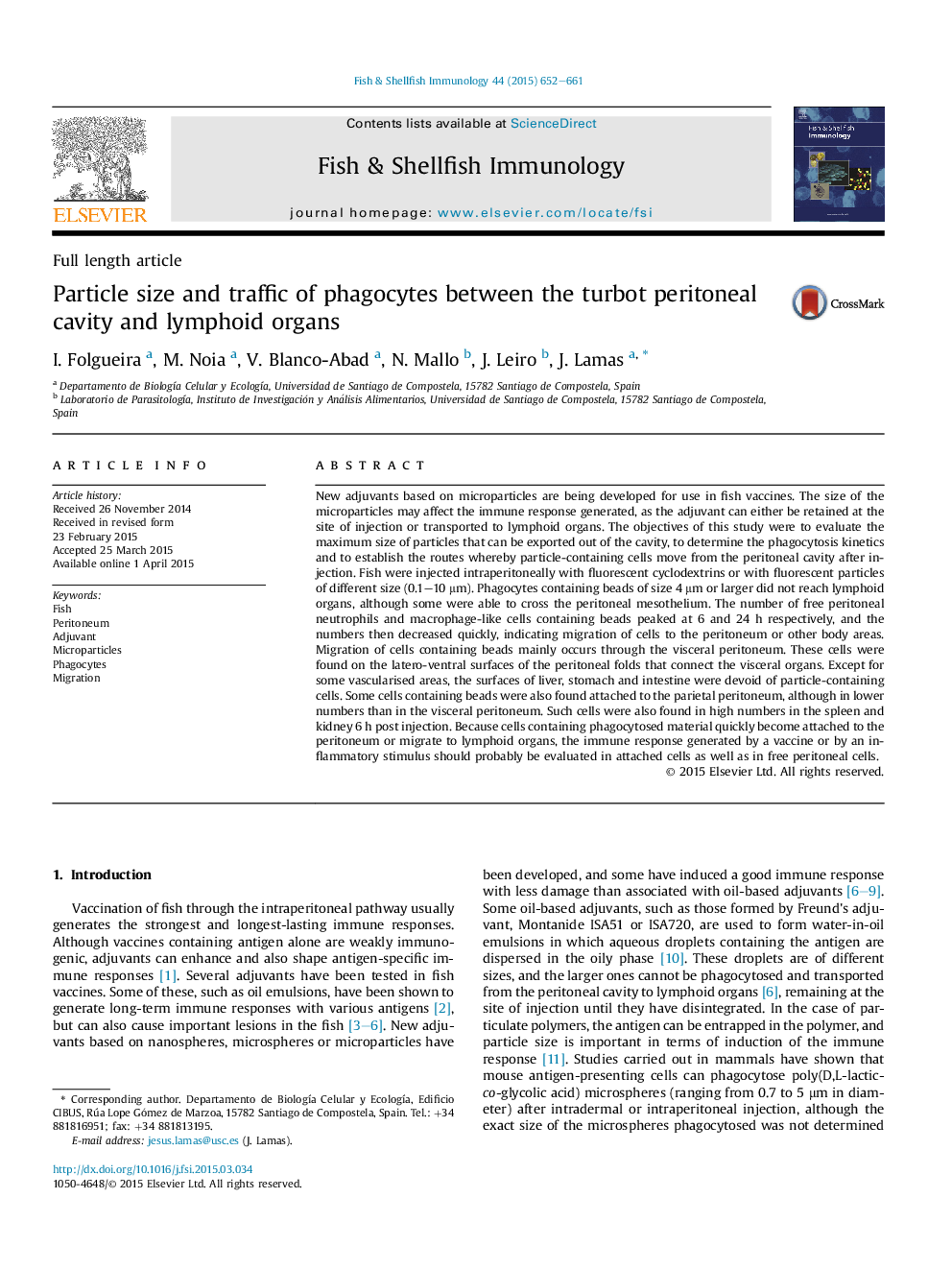| Article ID | Journal | Published Year | Pages | File Type |
|---|---|---|---|---|
| 2431244 | Fish & Shellfish Immunology | 2015 | 10 Pages |
•The number of peritoneal cells containing phagocytosed material peaked at 24 h post injection.•Phagocytes containing particles of 4 μm or larger did not reach the lymphoid organs.•Migration of cells containing particles mainly occurs through the visceral peritoneum.•Those cells penetrate through the peritoneal folds that connect the visceral organs.•Cells migrate also through the parietal peritoneum.
New adjuvants based on microparticles are being developed for use in fish vaccines. The size of the microparticles may affect the immune response generated, as the adjuvant can either be retained at the site of injection or transported to lymphoid organs. The objectives of this study were to evaluate the maximum size of particles that can be exported out of the cavity, to determine the phagocytosis kinetics and to establish the routes whereby particle-containing cells move from the peritoneal cavity after injection. Fish were injected intraperitoneally with fluorescent cyclodextrins or with fluorescent particles of different size (0.1–10 μm). Phagocytes containing beads of size 4 μm or larger did not reach lymphoid organs, although some were able to cross the peritoneal mesothelium. The number of free peritoneal neutrophils and macrophage-like cells containing beads peaked at 6 and 24 h respectively, and the numbers then decreased quickly, indicating migration of cells to the peritoneum or other body areas. Migration of cells containing beads mainly occurs through the visceral peritoneum. These cells were found on the latero-ventral surfaces of the peritoneal folds that connect the visceral organs. Except for some vascularised areas, the surfaces of liver, stomach and intestine were devoid of particle-containing cells. Some cells containing beads were also found attached to the parietal peritoneum, although in lower numbers than in the visceral peritoneum. Such cells were also found in high numbers in the spleen and kidney 6 h post injection. Because cells containing phagocytosed material quickly become attached to the peritoneum or migrate to lymphoid organs, the immune response generated by a vaccine or by an inflammatory stimulus should probably be evaluated in attached cells as well as in free peritoneal cells.
